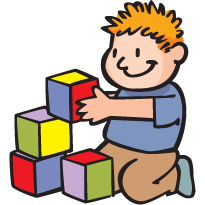Boston Children's Museum
308 Congress Street, Boston, MA 02210
617-426-6500
© Boston Children’s Museum 2025
Website Design by JackrabbitBy observing buildings and construction sites, students can see the shapes, forms and materials used to create the structures we live, work and play in. Using paper, straws and pipe cleaners, your students will sharpen their engineering skills as they work together to create a series of structures. Working collaboratively, students will communicate with each other as they investigate the variables that affect their structure, test its sturdiness and improve upon their design.
Cut the oak tag into strips 8.5 inches long and 1 inch wide, and use a hole punch to make a hole at both ends of the strips. You will need to have 8-10 strips for each team of 3 children.

If the option is available to you, you should consider taking a walk in the neighborhood around your afterschool center and encouraging your students to really take notice of the buildings. Who uses these structures? What are they made of? What shapes and colors do they see? Your children may notice that the shapes most often visible in completed buildings are squares and rectangles. If you can, bring your students to a building construction site. What shapes do they see in the exposed beams?
Once back in your classroom, start the activity by having a discussion about what types of shapes they saw in buildings in the neighborhood. Ask the children which shapes they think are the strongest. You may get several different answers. Make sure to write all answers up on chart paper or a dry erase/chalk board.
Which is stronger: a triangle or a square? Experiment with different materials in order to discover the answer to this question.
After 10–15 minutes of activity, stop your students and bring them together to discuss what they’ve done so far. This discussion should last no more than 5 minutes. Ask your students what they’ve discovered. Which shape is the strongest? Were they able to “stabilize” the 4-sided shape? Did they experiment with any other shapes? Go back to the board where you documented your student’s initial theories and ask them to suggest changes and additions to these theories.
Your students will find that the triangle is much sturdier than the square. This understanding is key to the later activities, in which children will build 3-dimensional shapes. When asked to stabilize the 4-sided shape, you may notice some students placing a strip diagonally across the shape, making 2 triangles. This will make the shape much sturdier. Students also may ask to add holes to the strips in an effort to make the shapes stronger—let them experiment in any way they can imagine.
After this brief discussion, give your students some new materials to experiment with: